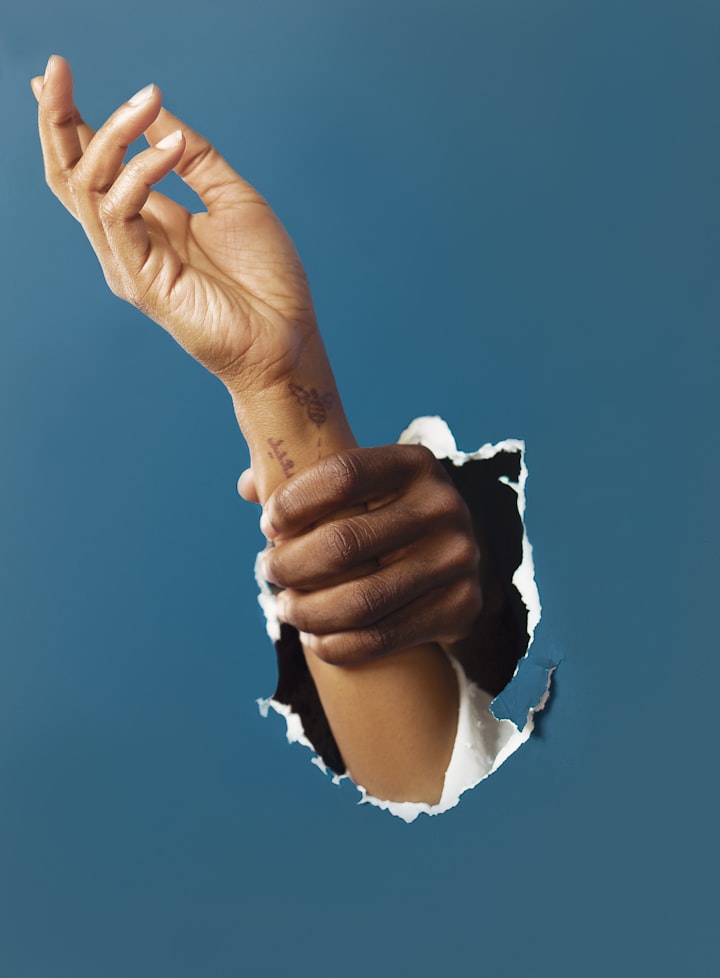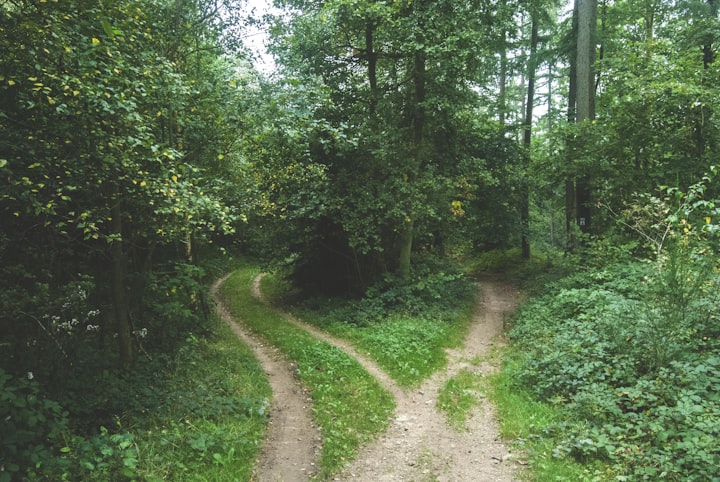
Inosculation: the naturally occurring codependence of trees. The warping of root, branch, and trunk until two become one, grafted to each other by friction; a process of exposure and growth, trauma and healing.
When expressed in human terms, it is the intermingling of two or more people, lives becoming inextricable.
As with wood, this can only happen once surface protections have been weathered –– once wind has blown and cambia are exposed –– the connection depends on raw contact. Branches from the two trees must be close enough to grind and lacerate themselves against each other before this marriage occurs. It is when they are at rest that this new growth appears.
Without harm, there is no reconstitution of Self; without loss, no reclamation through shared pain. The secret of these bound beings is the knowledge of the other’s damage through their own experience.
What happens when a tissue layer of undifferentiated cells is rubbed bare and comes to rest against the arm of another?
When I choose a favorite person, the decision is often of convenience and perceived necessity. Who is nearest to me? Who is most available? Whose boundaries fade as they edge ever closer? My kindness is a Singularity. What comes once that threshold has been crossed is a matter of great debate: are objects destroyed or merely transported to parts unknown? We do know there is no return to what once was—no going back. You can say you have been entirely changed if you don't cease to exist. Like Douglas Adams’ bowl of petunias and very surprised-looking whale, matter reshapes and inverts until you are unrecognizable and terribly confused.
This is the language of the borderline: favorite person. In my case, the bipolar with borderline tendencies. I rarely say no –– no favor is too great, no task too large –– why should you?
My favorite person is only sometimes a romantic partner. Often, they are a platonic partner. A person with whom I can share time and space and not muddy the interactions with sex and attraction. These “favorite people” (safer than the romantic) are often fleeting, but the effect is the same: cells mingle, and a marriage occurs. However, this particular connection assumes that it will be temporary. Even if longevity is in the works, there is a sense of security in the emotional distance that the lack of amorous intent has kept; this way, when separation occurs, flesh peels, but with quick regrowth.
The ties are deep sinews when the favorite person is a romantic partner. A relationship of this kind has more than surface-level implications; the marriage is a profound reworking of Self—a puzzling and queering restructuring of what once was. For this reason, the separation is a far greater trauma; it is an avulsion, exposing bone and threatening fatality.
The thinner the bark, the more likely that inosculation will occur. When bark is stripped, the youthful green withers. When branches are separated, the scarring can be read in the rings. When roots are pulled out, a tree dies. There is no end to inosculation that does not result in premature aging or the end of both trees.
I thought I was done with this process. This exposing and conjoining and eviscerating. After some years of cognitive-behavioral therapy, I thought it was handled. Time alone cultivating healthy friendships, thickening my bark, keeping my cambium to myself, the habit should have been broken.
It takes 21 days to break a habit. However, the key to keeping it broken is more than refraining from the undesirable behavior; it matters what you do to create in its place. The risk lies in a passive subduing without the active work of relearning –– teaching the mind something healthy to replace the act of codependence. It would have only taken me two months –– 66 days –– to form a new pattern of behavior, one where I love myself and enjoy the stillness of being alone, but I didn’t do this work.
When I started dating after this time, I worked to develop new tendencies that looked remarkably similar to a healthy monogamous relationship. We spent nights together for months before we ever had sex. We made meals together and walked to class together. We went to coffee shops and the library together to do homework. We stayed up late talking and got up early just to lay in bed and talk more. When I sifted through these things, I could see how they were more acts of codependence, not simply two people attempting to know each other. It was three, almost four months of this before the romance escalated; new habits had undoubtedly been formed, but not ones I had intended. Instead of living comfortably and independently alone, I had grafted myself to a kind-hearted and like-minded woman, one with whom I felt I could share everything, no matter the implications. The fact that we seemed so kindred made the codependence feel like health, not a sacrifice of self or individuality. I still contend it was the healthiest relationship I have ever had, but that’s not saying much.
Until my relationship with Abbey, I had mostly only dated devastatingly unstable women. People that reflected very little on themselves and the types of relationships they cultivated. People like me were stuck in a mental rut and disinterested in shaking themselves loose. Comfort weighed more into our decision-making than sanity or health. As is often the case in these types of relationships, the more time we spent together, the worse off we were. I cycled rapidly between bipolar highs and lows that frequently synced to the swings of those with whom I shared the most time. In this respect, my life was a rowboat set adrift at sea, directed and propelled by oars that do nothing without a fulcrum. Think of my partners as the tholes. The points by which all actions and thoughts would be filtered. I moved by the grace of whomever I was dating then; this was entirely my choice. This is the codependence I thought I had shaken. These are the behaviors that looked different with Abbey. This is why I thought we were different.
It wasn’t until the relationship ended that I could see just how damaging it still was. Our separation felt like an emotional degloving. Scarring had occurred, and I had healed a little in time, but I picked at these scabs, flicking flakes of disrupted healing to the ground. Stepping.
The forward thrust of a leg is only so important when considering the physics of walking. While it is necessary to use force to move, it is equally necessary to relax and allow gravity to ground you so you might be propelled forward. It is necessary to let go. Sometimes when you think you need the most control, it is essential to let go.
Release was not something I could grasp. I was living in the apartment Abbey and I all but lived in together with her best friend. The lease was in mine and Mari’s name, but Abbey spent a good deal of time there. Running from this situation was my next move. Abandoning the familiar instead of solving the problem where I was. Going to China to live a monastic life for a month was a means to an end, an end I couldn’t define at the time but see more clearly now.
The question kept coming up: why did you choose to make this trip? A reasonable question. On the surface, not a particularly intrusive question. Despite this, every time it was asked felt like a challenge, even when asked by other people on the trip. I couldn’t find what felt like an honest answer. Even worse, I didn’t know if one was to be found. There is, but I didn’t realize this until very recently. I had plenty of answers to give people while what I already knew took its time to surface in my consciousness. Each iteration varied slightly from the last. First, I was there to expand my philosophical studies by delving into Buddhism. This academic pursuit quickly became a more spiritual one as I told people I was seeking peace and a deeper relationship with myself; this became self-forgiveness and self-love until finally landing on a combination of all these things. The answer is all these things, but it is also far more straightforward. I wanted to escape. That’s why I took it personally whenever someone asked me why I left; because the real reason was akin to an adolescent packing up their favorite stuffed animals and leaving home when things weren’t going their way. I was simply on the run.
The escape is key. I am on the run. I have been for over a decade.
Perhaps Mary Oliver said it best, “Why am I always going anywhere, instead of somewhere?”
About the Creator
kp
I am a non-binary, trans-masc writer. I work to dismantle internalized structures of oppression, such as the gender binary, class, and race. My writing is personal but anecdotally points to a larger political picture of systemic injustice.






Comments (1)
Wow. This is so raw and honest, and so beautifully written. Thank you for sharing such a personal piece.